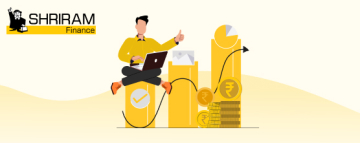Planning your retirement portfolio is not just about putting money aside — it is about making smart, strategic choices to help ensure your future lifestyle. With the right balance of growth and income strategies, a retirement investment portfolio can offer consistent returns and financial confidence throughout your retirement years.
In this blog, we will explore practical ways to design your retirement portfolio, go through the ideal investments for retirement income, and discuss one of the most feasible investments for retirement, while ensuring alignment with your long-term goals.
Understanding the Retirement Investment Portfolio
A retirement investment portfolio is a mix of financial instruments and strategies designed to build wealth over time and provide income after retirement. The structure of your portfolio will depend on your risk tolerance, expected retirement age, lifestyle preferences and income needs.
Key Objectives of a Retirement Portfolio:
- Generate a steady income during retirement
- Preserve capital with minimal fluctuations
- Beat inflation over the long term
- Minimise tax liabilities wherever possible
Step-by-Step Guide to Planning Your Retirement Portfolio
Planning a retirement portfolio can feel overwhelming, but breaking it down into clear steps makes the process manageable and effective.
1. Assess Your Retirement Goals
To plan effectively for retirement, begin by determining your desired retirement age, estimating your expected monthly expenses thereafter, considering your life expectancy and identifying any significant post-retirement financial goals like travel, gifting, or philanthropy. This clarity will help you calculate the corpus you need to accumulate.
2. Decide Your Risk Appetite
Risk appetite usually changes with age. Younger individuals (below 45) can afford to be more aggressive, while those nearing retirement (above 55) usually prefer a stable income.
Risk Tolerance Matrix:
| Age Group | Risk Profile | Ideal Allocation (%) |
| 25–40 | Aggressive | 70% equity, 30% debt |
| 40–55 | Moderate | 50% equity, 50% debt |
| 55+ | Conservative | 30% equity, 70% debt |
3. Diversify Your Portfolio
Diversification reduces risk exposure by spreading investments across various asset classes. Your core investment options may include:
| Asset Class | Role in Portfolio | Risk Level |
| Equity | Growth-oriented | Medium to High |
| Fixed Deposits | Income generation | Low |
| Government Bonds | Stability and capital preservation | Low |
| Mutual Funds | Balanced exposure with fund management | Varies |
| Real Estate | Rental income and asset appreciation | Medium |
| Pension Schemes | Regular post-retirement income | Low to Medium |
Best Investments for Retirement Income
When planning for retirement income, the main goal is to ensure consistent earnings while protecting your capital. Choosing the right instruments helps you receive regular payouts without risking your savings too much. Popular investment options for retirement income include:
- Fixed Deposits: These are great for regular interest payments and offer the safety of principal, making them reliable for steady income.
- Government Bonds: Known for their stability, these bonds provide predictable returns backed by the government, ideal for cautious investors.
- Annuity Plans: Offered by insurance companies, annuities convert your lump sum into guaranteed monthly income, helping you manage expenses smoothly.
- Dividend Yield Stocks or Funds: These investments can provide semi-regular income through dividends, but their value can fluctuate with the market and so they carry more risk.
Balancing Growth and Stability in Your Portfolio
You cannot rely entirely on income instruments. A portion of your retirement investment portfolio should still be aimed at growth, to counter inflation and extend portfolio longevity. Here is an example to get a better idea of balancing growth and stability:
| Allocation Type | Instrument | Percentage (%) |
| Stability | FDs, Bonds, Pension Schemes | 50 |
| Growth | Mutual Funds, Equity Exposure | 40 |
| Liquidity | Cash, Short-Term Instruments | 10 |
Retirement Income Strategies to Maximise Returns
A well-planned withdrawal strategy is key to making your retirement funds last while maximising returns. Common withdrawal strategies include:
1. Systematic Withdrawal Plan (SWP)
A Systematic Withdrawal Plan is especially suitable for mutual funds. It allows you to withdraw a fixed amount regularly, typically monthly, providing a steady and predictable income stream. This method helps you avoid liquidating your entire investment at once, allowing your remaining corpus to continue growing.
2. Bucket Strategy
The Bucket Strategy divides your retirement into different phases: near-term, mid-term, and long-term. For the near term, you allocate money to safe, liquid investments to cover immediate expenses. The mid and long-term buckets can be invested in growth-oriented assets, which have higher potential returns to help your corpus grow over time while managing risk appropriately.
3. Dividend Strategy
Investing in dividend-paying stocks or funds can provide regular income through dividends, making it a useful strategy for retirees. However, it’s important to be cautious because dividend amounts can vary depending on the company’s financial health and overall market conditions, which means your income from dividends may fluctuate.
4. Laddering Fixed Deposits
Laddering Fixed Deposits involves investing in multiple fixed deposits with different maturity dates. This staggered approach ensures you have access to liquidity at regular intervals and reduces reinvestment risk, as you are not locking all your funds into a single deposit that matures at one time.
Factors to Consider Before Choosing Investment Instruments
Choosing the right investment instruments requires careful consideration of several key factors.
1. Inflation
Inflation means the rising cost of goods and services over time. If your investments don’t grow faster than inflation, your money will lose purchasing power. So, pick assets that can help your savings grow enough to keep up with or beat inflation, especially for long-term goals.
2. Liquidity
Liquidity refers to the ease with which you can convert your investment into cash without incurring a loss in value. Some investments, like fixed deposits or bonds, may lock your money for a fixed time or charge penalties if you withdraw early. Make sure you have enough liquid assets to cover emergencies or short-term needs.
3. Interest Rate Trends
Interest rates can fluctuate over time, affecting returns on investments such as fixed deposits, bonds, or loans. When rates rise, new investments may offer better returns, but existing fixed-rate investments may lose value. Staying aware of these trends enables you to make more informed investment choices.
Rebalancing Your Retirement Portfolio
Markets fluctuate — and so should your asset allocation strategy.
When to Rebalance?
- Once a year or after significant market movements
- Change in life situation — health, inheritance, or expenses
- Shift in financial goals
Rebalancing ensures that you don’t take unnecessary risks and that your portfolio stays aligned with your income goals.
Common Mistakes to Avoid
- Delaying retirement planning until the late 40s
- Relying solely on one type of asset (e.g., real estate or gold)
- Ignoring the inflation impact
- Not having enough liquid assets for emergencies
- Failing to account for healthcare costs in old age
Final Thoughts
Building a strong retirement investment portfolio doesn’t require extreme financial acumen — it requires consistency, patience, and informed choices. Start early, stay disciplined, and adapt your strategy as your life evolves. Remember, retirement planning is not a one-time event. It’s a lifelong habit of making conscious financial decisions that align with your desired lifestyle.






























